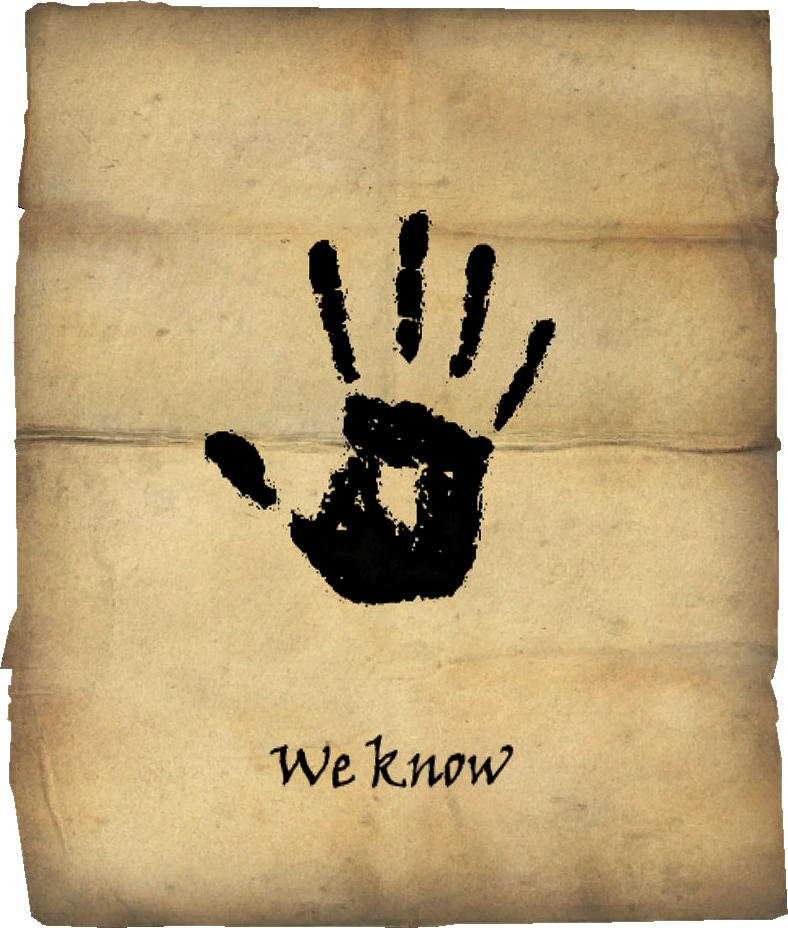It never works on me. I was taught at a very early age that pricing down by one cent of one dollar is a psychological trick and that I should round up to the nearest whole number.
Funny thing is, it still works.
On idiots. So on probably around 40% of population.
It actually works on smart people too.
Not really.
Yes, for the general population. Otherwise, companies will stop the psychological pricing. Same with corporate snooping to see our shopping and grocery habits and then send us with targeted ads.
that’s the important caveat:
it does NOT work on everyone, but that’s irrelevant.
if it works on even 1% of people, but has zero effect on everyone else, companies would still use it everywhere anyways.
a 1% difference over even just a couple thousand customers adds up over time.
so, no, it doesn’t work on everyone, and it doesn’t have to.
it just has to work on some people, and not deter any more people than it works on.
if anyone wonders when it does and does not work: like most of these psych-tricks the effect mostly disappears when you point it out to people or otherwise make them actively think about what they’re buying.
same for the change-the-layout-of-the-store-all-the-time thing: doesn’t work on all people, doesn’t have to.
On people who are actively trying to compensate for it, or did you just mean the overall population?
same way placebo still works (to a degree) even when you know it’s placebo
your subconcious is not logical, and no amount of conscious logic will fully defeat its influence
to think yourself immune is foolish and dangerous, that’s when you allow it to work even better as you “logically” explain away every manipulation you were influenced by, and convince yourself you made a decision fully by yourself. The danger gets even hotter when it comes to political propaganda that uses the exact same tricks as marketing
Yes, even them. It is all subconsciously.
Everyone believes they can’t be tricked by those simple things.
Most people are idiots most of the time.
Some people are idiots some of the time.
No one is never an idiot.
Can confirm. I’m idiot most of the time
I doubt it works on me. I have bought smaller items due to doing the per unit price in my head (don’t trust what they put there and two often then apples and organges the units) or completely not bought something or bought some alternative (potatoes instead of bread or rice instead of potatoes).
Because it is how we see prices. It takes a bit of effort to see it as 20.
If there is any research from the last 50 years suggesting this actually works, I’d love to see it.
The fact that almost every price for everything everywhere is like this is pretty compelling evidence that it works.
“It’s popular so it must be good/true” is not a compelling argument. I certainly wouldn’t take it on faith just because it has remained largely unquestioned by marketers.
The closest research I’m familiar with showed the opposite, but it was specifically related to the real estate market so I wouldn’t assume it applies broadly to, say, groceries or consumer goods. I couldn’t find anything supporting this idea from a quick search of papers. Again, if there’s supporting research on this (particularly recent research), I would really like to see it.
Yes, you can find plenty on Google I’m sure
They may list it as $19.99 but I’m always going to call it twenty bucks and eleven cents.
Its literally how we see prices which is why companies do this
Worked in pricing for a big retailer, it 100% works and retailers don’t even like doing it, but it’s basically a necessity to get baseline sales. It’s WAY easier to have simple even number prices that calculate easily and get percent off sales and clearance prices that make sense. Really the only items you see it on are items competing with other retailers, so kraft mayo that every store has vs. A store brand soda you don’t care about volume on. The Mayo you better have $5.99 instead of $6.00 or it looks like you’re ripping them off. And even if they sell it got $4.99 it still keeps people thinking it’s a complex price difference rather than an even number they can compare more easily.
Honestly I just want tax included on the price tag.
That’s an American problem too
That is honestly insane.
In NZ the sticker price is what you pay, if the price on the sticker doesn’t include tax, it is false advertising and you pay what is on the sticker.
It is entirely up to the retailer to ensure that the price is correct. The only exception to this, is if the price is obviously wrong e.g. $5.00 rather than $500.
It really is considering how easy it would be to implement.
Doesn’t it have its roots in forcing clerks to give change and recording the sale (rather than pocketing the money)?
$20 and $10 shipping: 😡
$30 and free shipping: 😄
It is kind of a dick move when companies overcharge for shipping. I only charge calculated shipping on large or heavy items because those are the ones that vary a lot and I don’t want someone in zone 8 (like Southern California or even someone in HI buying it and shipping costing more than they paid. If it’s under 1 lb then I just give free shipping and bake it into the price.
This reminds me of my early shopping days using EBay, where it wasn’t uncommon for sellers to under-price their products so they show up near the top of the price (cheapest-most expensive) sort pile, and then charge an outrageous amount in shipping.
I’ve found that almost always (at the time), that the seller offering free or low cost shipping was usually cheaper.
That was because their fees were based on the sale price of the item minus the shipping. So they were only paying fees on 1 cent. They changed the fees so that the total sale including shipping is calculated.
I don’t understand people who won’t pay £5 for shipping, but will instead spend another £15 on something they don’t need so they get free shipping.
All you’ve done is lost money.
It depends. If it’s something I know I’ll use, especially a consumable, I’ll do it.
That at least allows you to retrieve the full amount if you return the goods. Shipping costs you don’t get back.
I’ll admit, this works on me sometimes.
I hate that it does, but it do.
Part of it is that there’s less hidden costs. I like it when it’s just “the total is $30” instead of “there’s $8 shipping and a $2 service fee and then $4 in taxes and…”
I’ve also seen some online stores lure in a customer with a really cheap initial price and then on the last page just slam them with insane shipping and handling fees hoping that the customer either doesn’t notice or feels too invested at this point to cancel their purchase.
But yes, part of it is also people are stupid when they see the word “free” as if the store wouldn’t move the cost somewhere else.
This is locally grown artisanal bullshit, it’s actually $300, please tip.
please tip
I’ve actually started carrying cash again for the first time in 20 years because I’m sick of every fucking POS machine in the world asking for tips. Yes, I can choose not to tip, but there’s an emotional cost associated with that decision. There’s a cost associated with just seeing the option instead of being able to simply pay for my item and go about my day.
It is how it is, Americans are the dumbest
But it IS how we see prices. If there weren’t science behind it, they wouldn’t be doing it.
A lot of marketing strategies are pseudoscience. Just like a lot police investigation practices or body language assumptions.
I was watching a PBS documentary about the first humans in the Americas. All the scientists are super cool until you get to the American anthropologist who starts using phrenology to explain why Native American tribes shouldn’t be given repatriation rights, only for a Danish geneticist to say “yeah, this is absolutely a Native American and i am willing to testify to that in any court of law”
Pseudoscience is still all the rage if it can be used to push a political agenda.
JC Penny kinda showed that no. It isn’t pseudocience
What’s the story about JC Penny?
The CEO decided that clients were smart intelligent people and treated people as adults. Aka, no discounts, no 99 pricing, it just costs what it costs, as low as we can make it, plus our margin.
JC Penny was already not too well, this helped sink them
It was less about the .99 pricing and more about “Sale” pricing and ‘coupons’. Retailers will put a pair of pants on “Sale” for 50% off 51 weeks out of the year and people think they’re getting a great deal whereas when it’s not half off, they just don’t buy.
Poor guy. Tried to do some good in the world and paid the price for it. Nobody ever went broke overestimating the stupidity of the average person.
“Why would I pay $25 for these pair of pants at full price when I could pay $24.99 for those [identical] pants that are half off?! Clearly, that’s the better deal!”
Hell, could probably even make it $29.99 for the identical pants and people will still go with that because they think they’re paying five more bucks and getting a $60 pair of pants
Some marketing strategies are pseudoscience, but this one isn’t.
Does anyone in the thread have actual info to back this up?
This doesn’t meet the bar you want, but my marketing professor called the .99 idea the single greatest thing to come out of marketing in a century.
Sounds about right.
Marketing hasn’t done anything positive for humanity. It is all just to manipulate people into buying shit they don’t need. It is the main driver for the overconsumption.
You should be able to find various tests and studies of this phenomenon on Google
So, it’s a “no” than?
It’s a yes but find it yourself
dowsing for suckadrippas
The science is about how you initially react to the number. Your brain will see $19, and immediately you’ll think it’s $19. Only upon further inspection and processing through your cognition, you recognise that its $19.99, which is basically $20.
It’s that initial reaction they want, to grab your attention. Anyone who is going through life without leveraging their higher thinking will fall for this shit. Anyone who thinks, at all, won’t.
Unfortunately, there’s a nontrivial number of people who fall into that first category. People who were never taught to think. They just do.
But it IS how we see prices.
I don’t. Never did. I’m sure I’m not the only one.
Same, I’ve always just rounded up. Even when it comes to things like .50¢ I still just round it up to the next dollar.
You do though
At some level you will favor the 19.99. You might justify it with some other rational but there will be the bias.
No, I really don’t.
No, I dont though.
It really depends on the study you choose to believe into. (No, everyone does it, isn’t a pro argument. People always had strange beliefs which later changed. I think it’s called major consensus narrative or maybe consensus reality
I like this hill, I’ll stay here. Thank you.)
I generally round up to nearest bigger number or close to that. $19.99 is $20. $23.99 would probably be $25. $180 would just be $200.
No real rhyme or reason, just the bigger the number the more I fudge the “real” price upwards thanks to sales tax and a “can I really afford this?” factor.
I’m not sure it works on me. Not because I’m some super human resistant to advertising (I’m not) but because I’m so bad at math that when they start asking me about anything involving small change I tune out and overestimate by 50% rounded into nice whole numbers.
“This is 19.99”
“Okay so it’s basically 30$.”
It gives me nice surprises sometimes when I get my receipt.
You have to be, like, better at math to do that though?
Decimals are the devil’s work.
You can remove the decimal then add it back at the end
15.50
Is
1500
Half would be 775
Or 7.75
yep, and figure out what 20% of your bill is by taking 10% and double it. saves my ass every time i gotta tip lol
You can take 1% of anything, then multiply as well.
Like 7% of 15.50
1% is .155 (10% is moving decimal to left once, 1% is twice)
.155 × 7 = 1.083
That’s a hard one to do in your head, but .155 × 7 is easier to do on paper than 15.50 × .07.
Say something is 49.99 and 7% off. 1% is .5. .5 ×7 = 3.5. You could probably do that in your head. Otherwise, good luck trying to do 7% of 50 in your head.
Edit: Hmm. So you could also do 3.5% of 100 instead of 7% of 50. That would have been the easiest way to do that one.
Bonus: I thought I’d mention 11s. They are my favorite thing in math because they are so easy and you seem like a math wizard to anyone.
Say you have 42 × 11. That’s 462.
You just split apart the 4 and 2, add 4 and 2, then stick it in the middle.
Something like 67 × 11. Where the digits add >10.
6…7, 6+7=13, 6+1…3…7. So 737.
Using whole numbers can be easier when estimating













